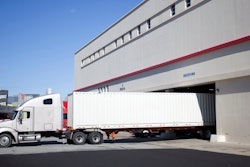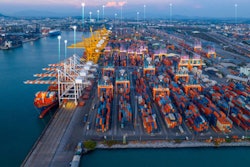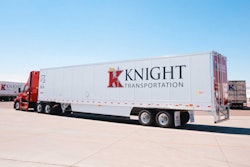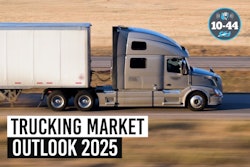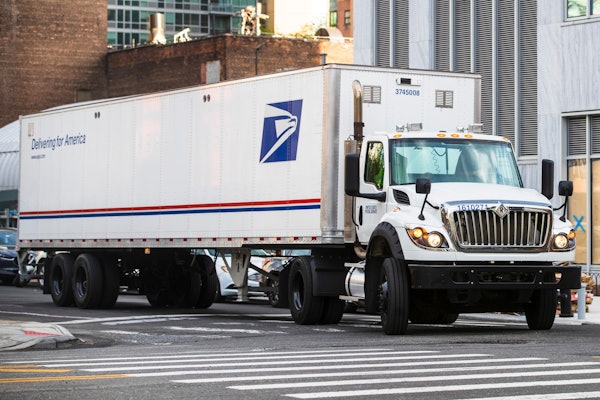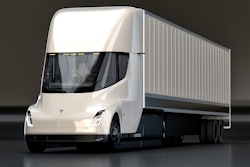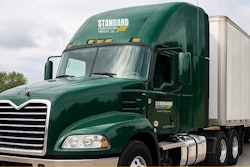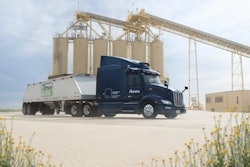Despite President Donald Trump’s 30-day postponement of proposed tariffs on Canada and Mexico, industry analysts voiced concerns on the potential impact they could have on truck production and pre-buy activity.
American Trucking Associations President and CEO Chris Spear noted new tariffs could dampen a trucking recovery that has been plagued by decreasing freight volumes and increasing costs for motor carriers.
“A 25% tariff levied on Mexico could see the price of a new tractor increase by as much as $35,000,” Spear said. “That is cost-prohibitive for many small carriers, and for larger fleets, it would add tens of millions of dollars in annual operating costs.”
Higher costs on imported goods can also trickle down to customers.
“Given the current uncertainties, what we can say for the moment is that any tariffs will increase our costs, and we expect the industry as a whole to pass the increased costs on to customers,” said John Mies, corporate communications at Mack Trucks and Volvo Trucks North America. “Quantifying that isn’t possible right now."
Dan Moyer, senior analyst, commercial vehicles, at FTR Transportation Intelligence, said that OEMs may face supply chain challenges due to tariffs and counter-tariffs, leading to longer lead times and potential shortages of critical components.
Moyer said rising costs for raw materials and components will increase vehicle prices, putting pressure on profit margins. Relocating production to mitigate tariff impacts is a complex and costly process, requiring significant time, capital investment, and workforce adjustments.
Additionally, Moyer said trade policy uncertainty could create demand fluctuations, making it harder for OEMs to accurately forecast sales and for dealers to manage inventory effectively.
In contrast, Ken Vieth, president and senior analyst at ACT Research, pointed out that unlike in previous years, there aren’t currently pandemic-related disruptions exacerbating trade challenges or parts procurement.
“Four years removed from Trump’s first term, and six years from his first tariffs, a lot of investment has taken place to harden supply chains, so from that standpoint, there should be little change in parts availability, we believe,” Vieth said.
However, if Trump's 25% tariff on key trading partners indeed take effect next month, Vieth said the resulting inflationary pressure – leading to higher prices, increased interest rates, and reduced economic activity – could lower freight volumes. This would, in turn, reduce truck demand, making parts easier to source.
At the same time, Vieth added that higher new vehicle costs would likely suppress truck purchases, at least in the short term.
[RELATED: Looming tariff threat hampering new truck orders]
Pre-buy implications
As fleet operators anticipate cost increases, tariffs can influence pre-buy behavior in the market, from accelerated purchases to potential dampening of demand for new trucks.
Pre-buy activity is largely driven by expectations of rising vehicle prices in early 2027 due to emissions compliance, Vieth pointed out.
“Currently, still weak freight rates and beaten-up carrier balance sheets are limiting pre-buying in the U.S. tractor market, though we have seen a pick-up in vocational truck demand suggesting pre-buying in the heavy work truck market segment is happening,” Vieth said.
Moyer added some fleets may decide to accelerate retail purchases from currently high dealer inventories to avoid price hikes, causing a temporary spike in retail truck sales.
Vieth said if a 25% tariff is applied to Mexican imports, Class 8 truck prices would rise sharply, immediately dampening demand for tractors.
“While the balance between truck supply and freight demand is improving, helping to boost industry profitability this year, higher consumer goods prices brought about by tariffs would have a corrosive impact on freight volumes,” Vieth said.
However, once tariffs take effect and inventories shrink, Moyer pointed out that rising vehicle costs could slow demand as some fleets delay purchases.
Moyer added the combination of potential tariffs and the U.S. EPA’s 2027 NOx emissions regulations could lead to a dual pre-buy effect, with fleets purchasing early to sidestep both regulatory costs and tariff-driven price hikes. Meanwhile, ongoing trade uncertainty may cause some fleets to take a cautious wait-and-see approach, delaying major investment decisions and long-term fleet planning.
As fleets make long-term decisions, Moyer pointed out that fleets should weigh total cost of ownership, balancing potentially higher upfront truck prices against long-term savings in fuel, maintenance and regulatory compliance.
Supply chain stability is another key factor, Moyer said, as parts shortages could result in unexpected downtime and increased maintenance expenses.
“Monitoring OEM and supplier strategies, including potential production shifts, may help fleets anticipate pricing and availability trends,” Moyer said.



